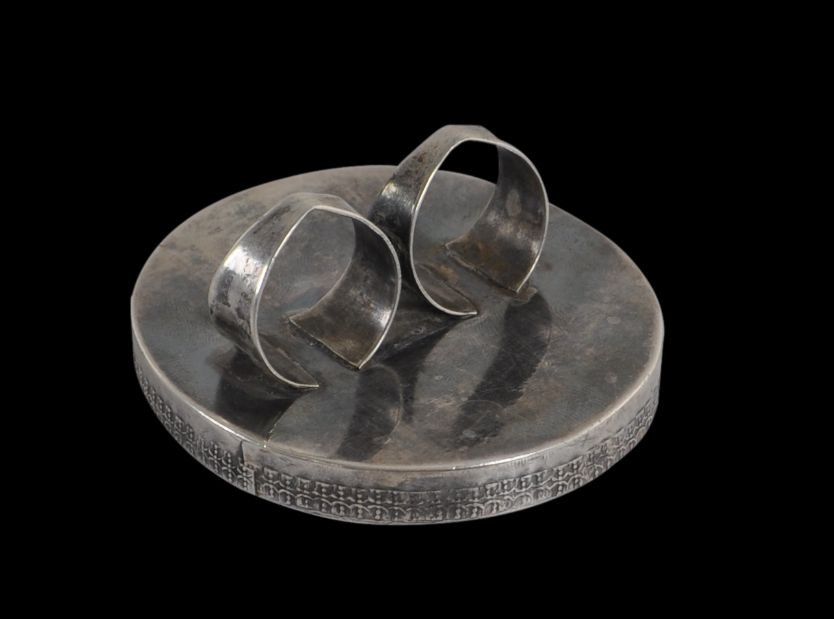This large and spectacular oval-shaped ring is from the Kazakh people of Central Asia. It is improbably large – indeed, this type of ring is among the largest produced and intended to be worn. It is of silver with glass inserts.
The face or bezel is decorated with superb granulation work and inset with glass backed with red foil in two oval-shaped cartouches separated by a central raised divider. The back has a double finger hoop through which two fingers would be inserted at once.
It would have been commissioned to be presented by the mother of the bride to the matchmaker and was known as a kudagi zhuzik. The double finger hoop on the reverse symbolised the marriage. (However, Ghose (2016, p. 153) says that such rings were presented to the mother -in-law.) Such rings subsequently would have been worn for their talismanic or protective properties.
Similar examples are illustrated in Borel (1994, p. 131), Seiwert (2009, p. 223), Geoffroy-Schneiter (2011, p. 66-67), Bashkanov et al (2012, p. 299) and Ghose (2016, p. 153).
The example here has good wear and obvious signs of age. It is without losses or repairs.
References
Bashkanov, M., M. Bashkanov, P. Petrov, & N. Serikoff, Arts from the Land of Timur: An Exhibition from a Scottish Private Collection, Sogdiana Books, 2012.
Borel, F., The Splendour of Ethnic Jewelry: From the Colette and Jean-Pierre Ghysels Collection, Thames & Hudson, 1994.
Geoffroy-Schneiter, B., Asian Jewellery: Ethnic Rings, Bracelets, Necklaces, Earrings, Belts, Head Ornaments, Skira, 2011.
Ghose, M. (ed.), Vanishing Beauty: Asian Jewelry and Ritual Objects from the Barbara and David Kipper Collection, Art Institute of Chicago, 2016.
Seiwert, W.D., Jewellery from the Orient: Treasures from the Bir Collection, Arnoldsche Art Publishers, 2009.







